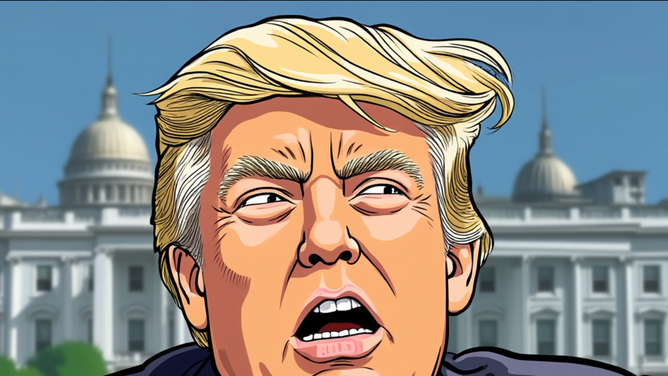Trump Soars To Record Lead Over Kamala In Betting Market
Donald Trump's lead over Kamala Harris in the betting market soared to an all-time high of 16 points on Tuesday morning. As of publication, Polymarket gives Trump a 57.9 percent chance of victory, compared to 41.9 percent for Harris.
For reference, Trump and Harris were tied at about 49 percent each just 14 days ago. Trump pulled ahead by 4 percent to 5 percent early last week. At Harris' peak, in mid-August, she led Trump by 6 percent.
Trump's surge and Harris' subsequent fall are likely due to a combination of Harris' seemingly desperate last-minute media blitz, internal polling favorable to Trump, concerns about fracking in Pennsylvania, and a concerningly low number of Americans satisfied with the direction of the country.
Specifically, just 28 percent of voters say America is "on the right track." No incumbent party has ever won a presidential election when that number is less than 39 percent.

Trump via Gok.
Skeptics of Trump's momentum question the accuracy of the betting market. On Tuesday, the New York Times tried to cast doubt on the market, noting that the "prediction markets tell a different story from the polls."
That is correct.
Trump and Harris remain neck and neck in most mainstream polls, separated within the margin of error in most key battleground states. But while the betting market is a more novel science for the American media, the market was more accurate in 2016 and 2020 than most public polling agencies.
On average, public polling underestimated support for Trump by nine points eight years ago and five points four years ago.
Thomas Miller, a professor of data science at Northwestern University, explained to the Times that prediction markets are often better forecasters than polls because they’re faster at detecting breaking developments, including debates and news events.
"Political betting sites are the best at predicting the wisdom of the crowd," said Miller.
The betting market is also harder to game than public polls.
Public polling has long been a tool used not just to measure, but also to shape public perception. Most polling agencies are marred by a political bent (New York Times/Siena leans left; Rasmussen leans right) and thus purposely oversample specific demographics to help produce a preferred outcome.
For example, the gender gap this year is profound. According to NBC, Trump is polling +16 among men while Harris is +14 among women, resulting in a record 30-point gap between the two genders.
Therefore, even a slight oversampling of one gender can greatly distort the accuracy of a poll. Now, you see why the New York Times/Siena tends to sample more women than men.
In contrast, the oddsmakers mostly just want to make money. They are incentivized to set the most accurate odds possible.
"PredictIt caps bettors to $850 apiece, limiting the ability of any one person to manipulate the odds," the Times admits.
While Polymarket does not cap bettors, DealBook notes that research suggests that any manipulation of such markets tends to have only a short-term effect.
Now, if the betting market proves to be a farce next month, its credibility in 2028 should reflect that. However, all factors considered, the market appears to be a better indicator of election trends than public polling.
Here's a look at my latest electoral map projection:
Donald Trump is by no means a lock to win, but he should be considered the favorite.
[Cover photo via X's Grok.]